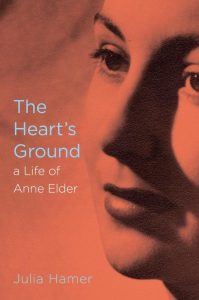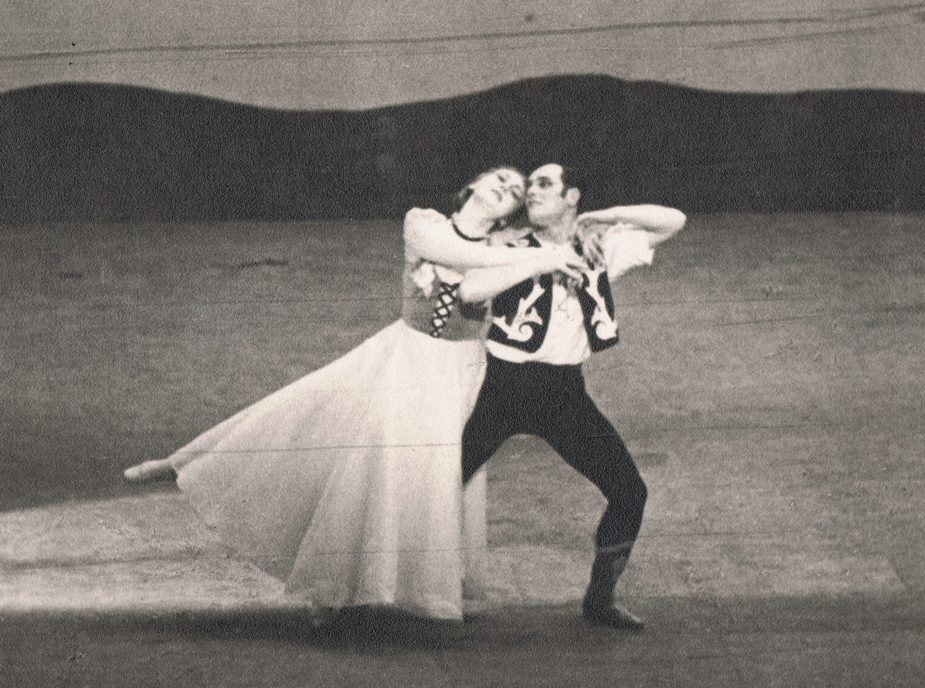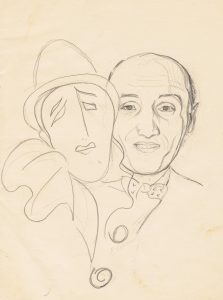Discovering and Rediscovering Anne Elder
Ballet dancers’ biographies are not exactly a dime a dozen, but they do make it to the bookshop shelves with a modium of regularity as by-products of self-promotion or a well-planned anniversary event. There is, after all, no better moment for a publisher to hazard a foray into the niche world of ballet writings than when a dancer is basking in the warm glow of celebrity or the filtered light of topical occurrences. Naturally, I also tend to annoy said publishers because I rarely buy these titles on first release. I’m one of those patient, prudential types who waits until last year’s new release turns up looking lost and embarrassed on the remainder tables at a discount store. Or I’ll wait until a copy turns up in need of rescue from a second-hand bookshop, at which point I take added pleasure in tsk-tsking the former owner’s cavalier purchasing power and desultory interest in an obviously riveting subject.
By comparison with today, however, the mid-20th century was a boomtime for ballet biographies as two waves of balletomania produced books for overlapping generations of dance-lovers. From the 1930s onwards, a succession of retrospectives by former dancers and patrons associated with Diaghilev’s Ballets Russes hit the shelves, selling side by side with photo-books and biographies of a younger generation of stars headed by the likes of Margot Fonteyn. My own bookshelves bear testament: for example, my 1950 reprint of Tamara Karsavina’s Theatre Street (1930) keeps amiable company with a 1960 Penguin paperback edition of Serge Grigoriev’s The Diaghilev Ballet (1953), and both are just a few spines down from Rudolf Nureyev’s ghosted autobiography, none-too-compellingly titled: Nureyev: An Autobiography (1962). To these, you can add a 1955 reprint of Arnold Haskell’s Diaghileff (1935) and William Chappell’s Fonteyn: Impressions of a Ballerina (1950), both of which are shuffling into comfortable positions after finding their way to me earlier this year. Chappell’s reminiscences were an unlikely discovery in the midst of Spudfest in the Victorian township of Trentham. There are few better definitions of “a good day out” than to return home with a boot-load of fresh potatoes and yet another ballet book from an out-of-the-way second-hand dealer.
Of course, some of these titles have since become very well-known, like Karsavina’s Theatre Street and Haskell’s Diaghileff, which are key texts for their period. Others, like Elaine Fifield’s In My Shoes (1967) or Valentin Zeglovsky‘s Ballet Crusade (published in 1943 on an idiosyncratic mix of blue, tan and green paperstock by avant-garde publishers Reed & Harris of Adelaide), started sinking into obscurity almost the instant they appeared. Yet, thank goodness they were published, because in the history business it’s amazing how something desperately obscure can suddenly spring to life as as a piece of vital, argument-bolstering evidence. Zeglovsky – who, frankly, had been struggling to justify his shelf space – finally got his moment to lark about as historial witness and raconteur when I was researching ballet in Monte Carlo back in May. Zeglovsky, it transpires, performed at Monte Carlo in the 1930s and earned something of a reputation as a gambler among his colleagues. Turns out he was rather a dab hand at losing his salary on the green baize, though he treats this matter with the most alarming insouciance. Much more piquing for him was the prospect of a too-meagre supper of sandwiches served up by the Prince of Monaco.
Which brings me, in a very roundabout manner, to the biography of another mid-20th century ballet dancer, Anne Elder, which was released by Lauranton Books in 2018. Elder, who danced under her maiden name Mackintosh, is not a figure that ballet-goers will likely recall, even in Australia where she danced as a soloist in the Borovansky Ballet from 1940-44. Born in New Zealand in 1918, Elder’s most significant artistic contribution was actually in the field of literature. She was a was highly regarded poet and now gives her name to the prestigious Anne Elder Award for Australian poetry. The biography by her niece Julia Hamer, The Heart’s Ground, was released in conjunction with a new compilation of Elder’s work titled The Bright and the Cold (2018), which is a showcase of Elder’s rare ability to turn the domestic and mundane into evocative images and suggestive narratives that go far beyond the few lines taken in the telling.
Perhaps more notably, Elder’s creative life is also a valuable reminder that artistry need never be limited to one sphere of practice despite our instinct to pigeonhole people according to their field of greatest achievement. For dancers, in particular, the end of their active life on stage is too often construed as a kind of ‘end of everything’, of all life’s vim, vigour, colour and excitement. If you don’t manage to go mad like Nijinsky or Spessivtseva, or make a screaming exit in flames like poor Emma Livry or Clara Webster, then you’re simply spoiling the grand, compact drama of a career in the limelight with an excess of banal premortem filler. Accounts of dancers who extended their creative careers in other fields are still surprising rare considering that the creative impulse doubtless motivates numerous dancers to write, paint, act, sculpt, play and compose far more frequently than anyone acknowledges. Robert Helpmann is perhaps the best-known exception, celebrated both for his career in ballet and as an actor on stage and film. Elder is a welcome addition to the list.
Elder’s life story is straightforward enough – in fact, her biography is almost cursory after the padding of an extended family history in the book’s opening chapters. Her career as a dancer with the Borovansky Ballet eventually comes into focus in Chapter 9, contextualised by Hamer with the aid of Frank Salter’s biography of Edouard Borovansky (Wildcat Press, 1980). All well and good, but the real gem is actually Elder’s own memoir of her time with the company, which is published as an appendix titled “Borovansky: Strong Man, Sad Pierrot.” I mention this because it’s a rare and useful first-hand account of the man who left an indelible mark on ballet in Australia, hidden at the back of a text that won’t be an obvious go-to source for researchers interested in this period of Australian dance history.
Regrettably, Elder’s ballet career was cut short by marriage, a not uncommon occurrence in the 1940s, but one we often forget amid the glamour attached to those leading ballerinas who stayed in the game or delayed marriage until past their career peak. I was particularly struck by the distress that giving up dancing caused for Elder. Hamer relates that it was only after Elder’s poetry began to receive public recognition “that Anne could watch ballet [again] without pain.” It makes Elder’s creative breakout as a poet all the more inspirational, revealing her as a very human, steadfast spirit who refused to capitulate to the monotony of domesticity, or be deterred from her efforts by the prospect of a male-dominated literary establishment.
Well done to Lauranton Books and the members of Elder’s family who supported the preparation of this biography and the companion edition of Edler’s works. Poetry and ballet are equally niche subjects and it might have been all too easy for Elder’s story to remain untold. Her biography isn’t one that ballet lovers will immediately reach for, but Elder’s account of dancing with Borovansky is precisely the kind of record that dance historians will adore stumbling over down the decades and centuries to come. Thank goodness for the phenomenon of celebrity that sees the lives of high-profile dancers committed to print; but thank goodness for the quiet achievers like Anne Elder, whose less flamboyant and arguably more typical stage careers have the chance to be recorded as well.
 Julia Hamer, The Heart’s Ground: A Life of Anne Elder
Julia Hamer, The Heart’s Ground: A Life of Anne Elder
Gardenvale: Lauranton Books, 2018
ISBN 978 0 99425 073 5
The Bright and the Cold: Selected Poems of Anne Elder
Compiled by Catherine Elder
Gardenvale: Lauranton Books, 2018
ISBN 978 0 99425 074 2



Leave a Reply